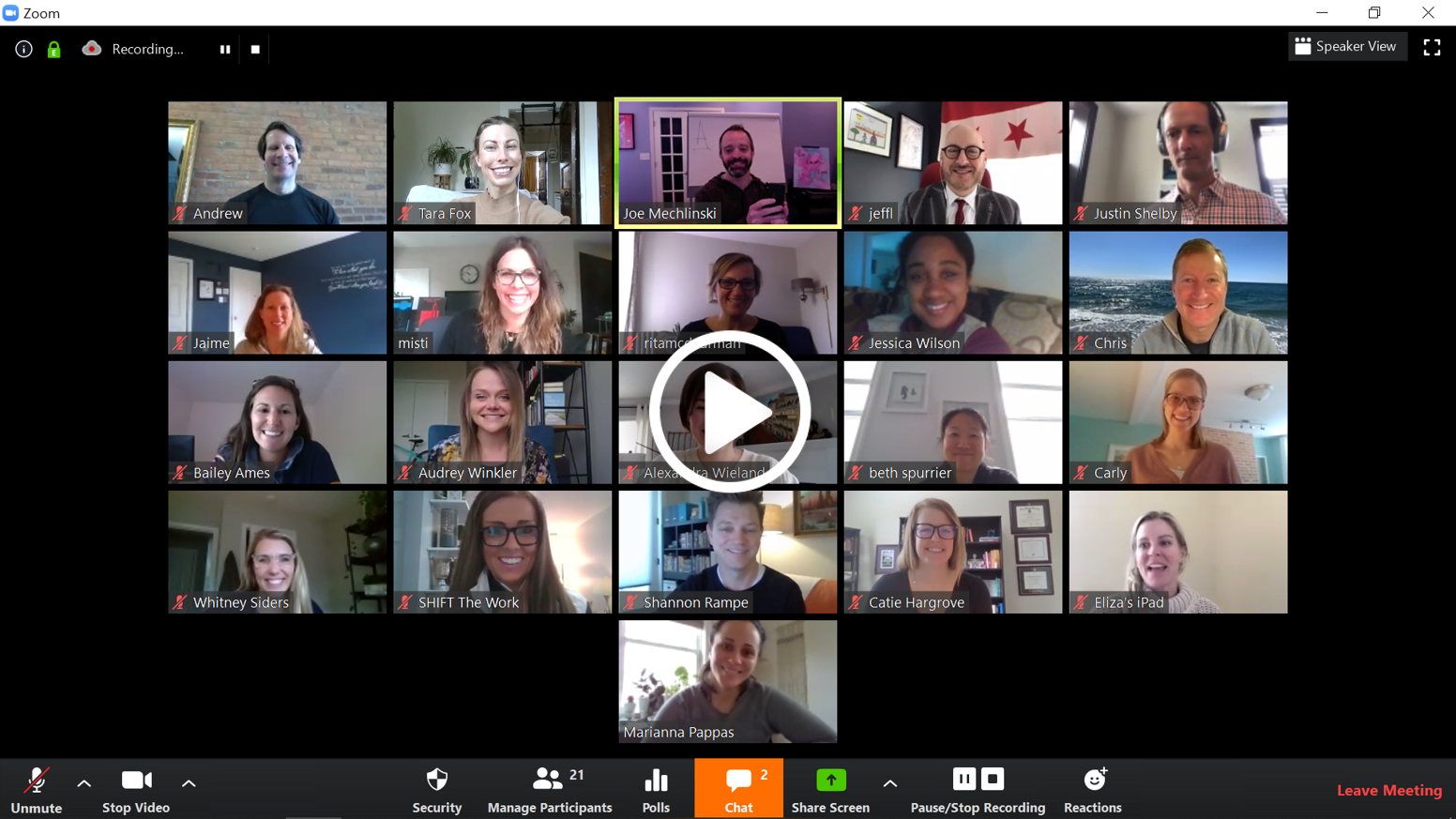.png?width=700&name=image%20(1).png)
“We shape our buildings; thereafter they shape us.”-Winston Churchill
As you have no doubt noticed, the past few months have massively disrupted life as we know it. Now we’re beginning to hear more about reopening the economy and returning to a “normal” state. After a period of disruption such as this, history tells us things almost never go back to the way they once were. In fact, times of great hardship and suffering almost always yield unexpected changes.
One example of this can be noted in World World I, an event that — though tragically marked by death — brought us huge, yet unexpected and rapid advances in technology. In 1914, planes were rare and fragile, but after the war broke out they quickly became stronger, faster, and more resilient. Photography, sound recording, and more advanced means of communication were all developed during the war. It also was an event marked by positive progress for women’s rights.
We can see the same thing from World War II. Jet engines, computers navigation systems, microwave ovens, and the means to put us on the moon all came from technology invented or rapidly improved during the second World War. The same is true of the Great Depression, and the Spanish flu.
Alongside massive suffering came accelerated advances. The same thing will almost certainly be true about this pandemic.
What I’m certain of is that we are not going back to where we were. And we might not realize it now, but our world will be better for it.
But, before you read on, I’d like you to do an exercise.
Grab a piece of paper and a pen. Make two vertical lines on your paper to create columns for “before,” “during,” and “after.” Take a moment to jot down notes about what was true before this pandemic, what we are going through now, and then see if you can anticipate what might come next.
Whoever has the vision and insight to predict what comes “after” while we are still in the “during” phase will lead the way for progress.
To understand how this disruption has affected our team, we developed and deployed a survey to hear about their experiences, challenges, and concerns right now.
- 83% shared that our organization was sufficiently prepared to make the transition to a fully remote work environment
- 72% revealed that their productivity has increased since the transition
- 55% (more than half!) said they’ve experienced improved connections with colleagues
While these are great examples of how this change has been positive, it wasn’t all good. Many of our team members admitted to feeling diminished confidence and concern about their future. As leaders, we’re in a great position to help alleviate doubt, disconnect, and disengagement.
Hardships teach us how to innovate and heal, and present opportunities to creatively adapt our antiquated human habits. This pandemic is already proving this to be true, especially in the workplace.
This is a pivotal moment to lean into the future of work. To take on this new and uncharted territory, and transform it into something extraordinary for employees, teams, and businesses.
At SHIFT, one way we’re embracing change is by changing how we meet! So, let’s dig into what my team discovered in this “during” phase.
This crisis gave us an opportunity to look inward and redesign how we communicate, collaborate, engage, and lead with even more intent, meaning, and creativity.
On April 17, 2020, our SHIFT team held our Virtual All Hands Meeting. The feedback was unanimous: we rocked it! By changing the way we planned and executed the meeting, we activated emergent values that we were previously unaware of. We were trying to recreate something we had done before, but inadvertently we created new outcomes that we had never thought possible
Most said it’s the best meeting we’ve ever had. We heard things like:
- Nailed it! Seamless use of technology with Zoom and breakout rooms.
- Kept the team engaged by inviting everyone into the conversation.
- Flawless execution.
- Loved the transparency from the team and company.
- Pulled off an all day virtual meeting that did not feel all day… not an easy thing to do.

I’ve noticed four key things about virtual meetings that increase performance and connection, despite our fully remote settings:
#1 People Are Pretty Happy to Be At Home
Before mandatory remote work, most of us spent our mornings wasting time on mundane routines. Waking early, working out (or not), getting spiffed up for the office, struggling to get children off to school, grabbing a quick breakfast to-go, then dashing out the door to... sit in commuter traffic for obscene periods of time.
People show up differently in the comfort of their home, and it’s a pretty cool thing to experience. We get a sneak peek into home office decor, meet unannounced guests, like children or pets, and see the totally relatable and human side of one another. Less perfection, less positioning, less politics, and so much more empathy.
In a typical office setting, we tend to adopt slightly different professional demeanors. This is normal, but it can potentially disconnect you from your innate gifts and intuition. While the pandemic has been taxing, it’s provided an opportunity to remove our professional “masks” and truly be ourselves.
During our meeting, this new behavior and way of being — people feeling they can show up as who they truly are — was refreshing. As a result, we had better conversations and more connected interactions.
The perfection illusion has been shattered, and I’m not sure we want it fixed.
The Technology Takeaway: Encourage your team to share their workspace, flaws and all. Consider kicking off each group meeting with an icebreaker, like sharing the funniest or craziest home-office moment. It will elevate the energy in the “room” and set the tone for a fun and collaborative meeting.
#2 Hierarchy No Longer Rules: There’s a New, Collaborative Model
We are too familiar with meeting formats that support hierarchy. When someone speaks from a podium or stage, or the front of a conference room, they have a tendency to talk at or down to their audience. The facilitator commands the room while participants become more passive and receptive. An invitation to be part of the discussion is often lacking.
In Zoom meetings, we’re each equally represented as symmetrical squares on the screen, whether you’re the facilitator or an attendee. Sure, the sense of leadership is still present, but it’s not overpowering. And that leadership can be shared.
To create structure and opportunities for shared leadership and collaboration, we set-up breakout groups during our Virtual All Hands Meeting. We did this twice throughout the day, each time leveraging three groups of six people, with clear roles and a set of questions to discuss. Everyone participated, including our leadership team, and afterwards we reconvened as a whole group and shared our experiences and takeaways using the Whiteboard feature to capture notes. I got the opportunity to hear feedback on company decisions, big and small, and ideas on how we can continue to adapt to our current situation as a business.
The Technology Takeaway: Create opportunities for collaboration. Just because you’re virtual, doesn’t mean you can’t run meetings as you typically would. Provide structure and invite active participation, get creative with your format and agenda, and provide guidance through questions and group discussion. Use features like screen sharing, breakout groups, and whiteboard to keep things engaging. Try not to sign-off or close a meeting until you’ve heard from everyone. Learn more on this in our recent blog, 6 Best Practices for Effective Communication: Remote Work and Beyond.
#3 Innovation Can Be Introduced Anytime, Anywhere
One of the beautiful things about being in this “during” phase is that no one knows exactly what comes “after.” It forces us to dive into uncharted territory, but this is where true innovation comes into play, and everyone is part of the process.
Fear and uncertainty often creates a unique space for ideation, so don’t shy away from the unknown, lean into it.
Just before our team broke for lunch (more on that in a moment) I briefly presented our Q2 plan. It was fairly minimalistic, because we can’t predict what lies ahead during these turbulent times. Our intent was to leave room for improvisation over the course of the next 12 weeks. So, to get our team thinking, we asked them to respond to six questions during their break:
1. What do you want to experience?
2. What are your top three priorities?
3. What do you plan to do this quarter to advance performance for our clients/company?
4. What do you want to learn?
5. What do you need to let go of or give up?
6. Where do you need the most help?
After the break, we gave everyone the chance to share their biggest takeaways from this exercise. Many shared that it made them rethink their priorities, sparked new ideas as they were thinking about how to actively apply this to clients or the company, and that it was awesome to have the unplanned space to reflect on their own. Some of the ideas that surfaced during this activity became the fuel for innovative evolution, and we’re actively testing those ideas to see the outcomes they produce.
The Technology Takeaway: Encourage your team to step away from their screens to do a writing or journaling exercise to spark creative thinking. Then, come together as a group and share those ideas, expand on them together, and let them begin to take shape. Challenging times bring out creativity in unexpected places, you never know who on your team has the winning idea to change your company’s future.
#4 Breaks Are Still a Must
For some, this may seem like a no-brainer, but you’d be surprised by how often leaders forget to incorporate breaks into long-form meetings. I’m talking real breaks — not working breaks. Time when your meeting participants can actually get up, walk around, and (these days) close their computer.
Breaks allow time for pause. They create space to slow down, process what’s been shared and heard during the meeting, and mentally reset for what’s still to come.
During our Virtual All Hands Meeting, we incorporated a series of mini-breaks throughout the day and provided a 90-minute lunch break. A small portion of that lunch break was used for creative thinking, but the rest of the time was dedicated for personal time. To eat, to give tired eyes a break from bluelight, to take care of things at home, or even to respond to emails. How that time was used was completely up to each individual.
As a result, when people came back they were genuinely refreshed and ready to give their best again. It broke up the day in a way that diminished exhaustion while still providing structure.
The Technology Takeaway: The most valuable gift you can give employees is time. Give them breaks more often than you think they are needed. Remember, this is a trying time for us all, a little more downtime can go a long way and motivate people to keep forging forward.
Shifting from in-person meetings to digital experiences using technologies like Zoom is just one of the many ways that this pandemic will leave its mark on the world. Leaders who embrace changes stemming from this pandemic as opportunities to innovate and evolve their business models will emerge as the trailblazers for what comes next: a work world that will be better than ever.
Ensure Your Employees' Success
How can leaders stay ahead? By listening to the people who live your mission every day: your employees.
Use our Free Employee Survey to quickly capture employee insights and identify the right priorities to meet your goals.








